Peracetic Acid Analyser – PeraSense

Peracetic Acid Analyser
Online, continuous Peracetic Acid Analysers, Peracetic Acid Monitors, Peracetic Acid Meters and Peracetic Acid Controllers make up the PeraSense range which utilises the very latest and best peracetic acid sensors available in the world today. It is a membraned device which uses no reagents, is extremely stable, and has reduced maintenance and reduced whole life costs.
Flexible Peracetic Acid Sensor Solutions
The PeraSense peracetic acid sensors, which give a peracetic acid measurement in ppm or mg/l, and a range of flow cells, are available with different peracetic acid controllers giving you the same great performance with different communication, display and control options. With the PeraSense range of peracetic acid analysers, you get everything that you need – and nothing that you don’t.
The PeraSense Peracetic Acid Monitor is used in many applications requiring the measurement of peracetic acid concentration simply for peracetic acid monitoring or peracetic acid dosing control.
The PeraSense peracetic acid sensors from Pi are two electrode sensors, which operate at an elevated applied potential eliminating zero drift. This design means that the sensors are reagentless, bufferless and only require a simple, one point (no zero required) calibration.
In addition to the state of the art membraned amperometric peracetic acid sensor, the PeraSense range of controllers has everything you need for your process. When paired with the CRIUS®4.0 or CRONOS® controller, you will get the highest quality peracetic acid monitor with all the functionality you need, at the lowest possible price.
Why use the PeraSense?
- Amperometric sensors – continuous online peracetic acid ppm measurement
- No chemical reagents – lower cost of ownership
- Stable and reliable – excellent process control
- Suitable for all potable and process waters including sea water
- Up to 6 months between maintenance
- Multiple sensors – reduced cost
- Additional sensors of different types including pH, ORP and conductivity are available
The PeraSense peracetic acid measurement sensors and flow cells are available with different controllers giving you the same great performance with different communication, display, and peracetic acid dosing control options.
- Peracetic Acid Dosing Control
- Bottle Washers
- Rinsers
- Seawater
- CIP Plants
- Drinking Water
Anywhere you have a requirement to measure residual CH3CO3H is a suitable application for PeraSense. The PeraSense peracetic acid monitor range is particularly suited to working in sites where reliability and ease of use are most important.
Why not click here and ask for a demonstration of all that our peracetic acid analysers can do for you?
Pi’s PeraSense peracetic acid sensors and flow cells are available with different controllers giving you the same great performance with different communication, display, and control options.
The whole range of PeraSense peracetic acid analysers can be fitted with additional sensors such as ORP or pH. Please ask your local distributor for more details.
The PeraSense peracetic acid analyser can be installed in a variety of auxiliary flow cells and self-cleaning devices.
The PeroxiSense sensors can come equipped to automatically clean themselves at user defined intervals, with all the benefits of no operator intervention for up to 6 months. The AutoFlush is particularly useful in food preparation, pulp and paper, and many applications where there is likely to be a build up of solids in the sample. For more information about AutoFlush click here.
The whole range of PeroxiSense Hydrogen Peroxide Monitors and Controllers can be fitted with additional sensors such as ORP or pH. Please ask your local distributor for more details.
The CRONOS® and CRIUS®4.0 controllers can be equipped with data-logging, relay outputs, analogue outputs and serial communications such as: Ethernet, Modbus and Profibus. Remote monitoring of the instruments (including remote access to all control options) is available via the internet over GPRS and via a LAN. In fact the CRIUS®4.0 PeroxiSense monitor has all the options you could want, whilst the CRONOS® provides a low cost alternative and is particularly great value for money!
Peracetic acid, is an organic compound with the formula CH₃CO₃H which smells like vinegar.
Pi offers peracetic acid sensors in the ranges:
- 0.5-200mg/l,
- 5-500mg/l,
- 5-1000mg/l,
- 5-2000mg/l,
- 50-5000mg/l,
- 50-10000mg/l
This depends on the application. The peracetic acid sensor has a very low drift so most people calibrate it either once a week, once a month or even every six months.
Every 3-6 months.
Once a year.
Yes, if you intend to use the PeraSense at a pH above 7 please contact Pi to discuss your application.
Ozone and Chlorine Dioxide interfere…please see the brochure.
If stored in a cool dry place, two years.
PVC-U, stainless steel, hydrophilic membrane.
0°C – 45°C
The sensor operates at a positive voltage all of the time so any drift on the zero is negligible compared to the positive operating voltage so no zero is necessary.
Nothing! The sensor has a thermistor that measures the temperature and does an automatic compensation.
Use a handheld meter. These are available from a variety of suppliers and nearly all of them utilise colorimetry to determine the chlorine concentration in the sample. Palintest have an electrochemical hand held test device called Kemio that is proving popular.
Firstly take the sample from right at the instrument. Secondly don’t take the sample when the concentration is varying quickly, and thirdly use a good quality handheld and follow the instructions carefully.
During calibration the analyser looks at the stability (rate of change) of the signal from the probe and if it varies by more than 10% over the countdown then the analyser prevents calibration to avoid the calibration routine introducing errors.
Focus Ons are a series of short articles distributed by email providing technical information regarding instrumentation, process measurement in potable, waste, process and pool waters. If you would like to join the mailing list, please contact us.
Membraned sensors come with many advantages over non-membraned sensors such as higher resolutions, fewer interferents and a greatly reduced effect of flow rate changes. These advantages can make a huge difference to the bottom line, particularly if the cost of the chemical being dosed is quite high. For free chlorine sensors, using a membrane can make your measurement much less dependent on pH (if you are using sensors from Pi), meaning your measurement is a more accurate reflection of chlorine residual.
As such, membraned sensors are now largely the norm in residual chlorine measurement and are also prevalent for chlorine dioxide and ozone monitors, but did you know that…
…membraned sensors are sensitive to changes in pressure?
…flow cell outlets can airlock even when water is flowing through them?
…membraned sensors can still be used when the outlet does not go to drain?
…Pi has engineered and designed solutions to all of these potential issues?
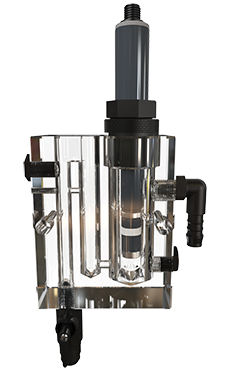
Sensitivity to pressure
Membraned sensors do have one property that needs to be carefully managed; they are sensitive to pressure. Pi was an early adopter of membrane technology, so we know that the installation of these sensors is just as important as the sensor itself. In fact, the same sensors in different flow cells can give very different results.
In order to prevent pressure variations affecting the probe, Pi typically uses open flow cells which eliminate variability in pressure before it reaches the probe.
Flow
Whether the sample to the cell is pumped, gravity fed, or comes from a pressurised line, it is important that the flow is controlled to within a range of 350-1000ml per minute, to ensure that sufficient flow is reaching the sensor and to prevent the flow cell overflowing.
If the flow to the cell is variable, Pi can provide a dole valve which controls the flow to approximately 500ml per minute, which prevents the cell from overflowing when pressure variations mean more flow than the cell can handle, while also ensuring adequate flow when the sample line flow/pressure reduces.
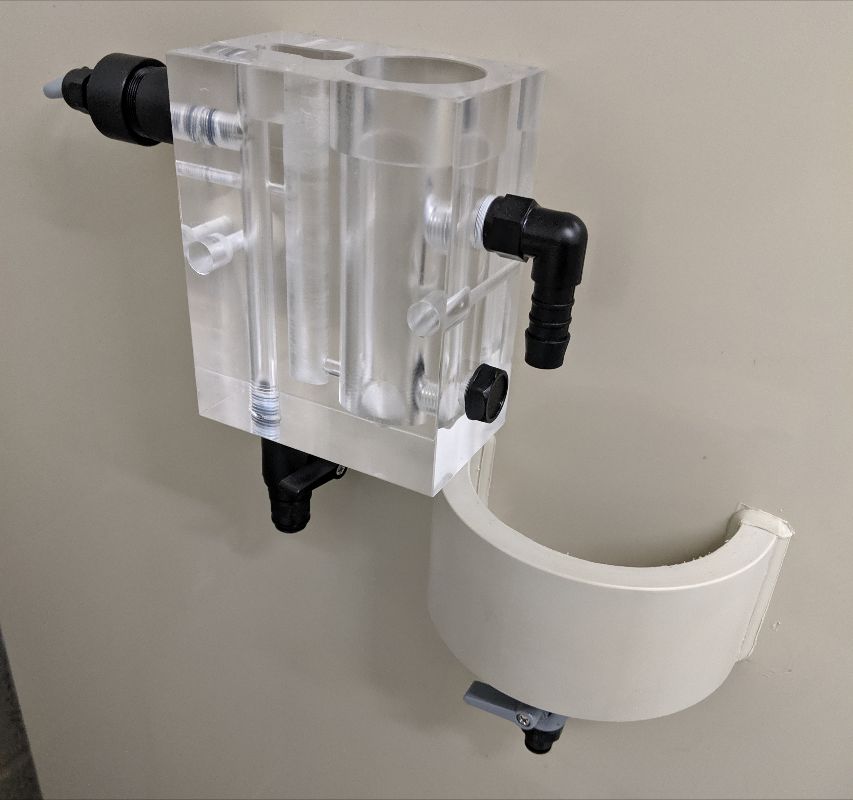
Airlocks
The outlet of the flow cell needs to be open to atmosphere, and completely unobstructed. Any system with a long outlet line (particularly flexible pipe) is prone to get airlocks, which will cause the cell to overflow. Outlets which are visually clear and even have water flowing through them, can be partially airlocked which causes backpressure to overflow the cell. This is very easy to diagnose as if you see the cell overflowing and remove the outlet pipe, you will see the cell go back to normal operations within approximately 10 seconds. If this is a persistent problem, consider putting in an air break using a commercially available tundish.
Outlets that do not go to drain
The water from a membraned sensor doesn’t have to go to drain. For processes where saving water is a high priority, a simple tank and pump system that will pump sample water back into your main process line will allow water losses to be reduced to almost zero. Pi’s CRIUS®4.0 controller can be used to control this return process and ensure that this tank never overflows and can automatically drain itself periodically to avoid sediment build up.
What if things go wrong?
As any water engineer can tell you, no matter how well the system is designed, lines can clog, pumps can break and someone on site could fiddle with the settings. Pi recognises these challenges and has engineered solutions into our systems. All Pi membraned sensors have the option to be able to:
- Have a flow switch to detect sample flow loss.
- Use dosing overfeed protection to protect against clogged dosing lines or pump failure.
- Have remote access for SMS or email alarms.
- Use relays to trigger beacons or sirens for alarms or control valves and pumps.
- Customise user security levels to control who can change what settings.
- Use status logs that show what happened to the system and when.
Closed Flow Cells
For membraned sensors, the best way of housing a membraned sensor is with an open flow cell. There are some occasions where this solution just isn’t practicable and in those instances the closed flow cells from Pi, which can take an overpressure of up to 3 bar, are the best solution.
Why is there a requirement for peracetic acid (PAA) online monitoring?
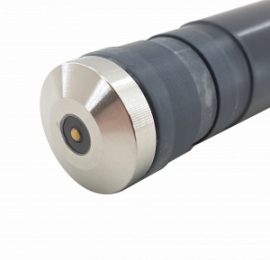
Common disinfectants such as chlorine and chlorine dioxide have been used effectively in water applications for over a century. Some industries however have looked to use other alternatives which have fewer or no considerations of safety and which don’t require residual or by-product removal. One of these alternatives, which has found increasing popularity across many industries, is peracetic acid (PAA). As more applications turn to PAA disinfection there has been an increase in demand for a reliable and accurate monitoring and dosing analyser.
Process Instruments’ (Pi) PeraSense is a robust online analyser capable of continually monitoring and optimising the levels of PAA, providing you with the peace of mind that chemicals won’t be wasted and the water quality will never be compromised!
Did you know that…
…Pi’s PeraSense requires approximately ten minutes of maintenance, once every six months?
…Pi’s PeraSense is suitable for all potable, process and salt waters?
…Pi’s PeraSense amperometric sensor has up to a 15 year life span?
What is peracetic acid and why is it used?
PAA is a powerful oxidant with an oxidation potential, used as a measure of disinfection effectiveness, greater than that of common disinfectants such as chlorine and chlorine dioxide. It is produced by the reaction between acetic acid and hydrogen peroxide when dissolved in water, and degrades over time forming non-toxic water soluble products. The free radical degradants (bug killing species); hydrogen peroxyl and hydroxyl have high oxidising capacities and are generally believed to destroy bacteria via the protoplasmic oxidation mechanism resulting in bacterial cell wall disintegration. The safe degradation pathway and high oxidation properties make PAA a popular disinfectant for many applications and industries.
Not only does PAA have greater disinfection power when compared to other alternatives but there are also implications of using chlorine which PAA users do not experience.
Chlorination of water can be achieved using three chemical mediums; chlorine gas, calcium hypochlorite and sodium hypochlorite, all of which have proved useful in many applications.
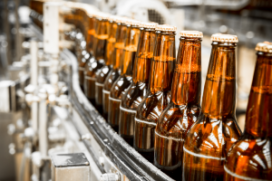 There are, however, several factors which affect their viability and all three mediums have safety concerns which must be addressed, including; potential gas release, corrosive properties and stability under heat and sunlight. As a result of this, sites often spend considerable amounts of time and money implementing safety precautions such as the safe generation and storage of these chemicals.
There are, however, several factors which affect their viability and all three mediums have safety concerns which must be addressed, including; potential gas release, corrosive properties and stability under heat and sunlight. As a result of this, sites often spend considerable amounts of time and money implementing safety precautions such as the safe generation and storage of these chemicals.
Furthermore, chlorine reacts with natural organic compounds found in the water supply forming potentially harmful disinfectant by-products such as Trihalomethanes (THMs) and Haloacetic acids (HAAs). The potential health hazards associated with exposure to these by-products, particularly THMs, have resulted in extensive drinking water regulations across the developed world with a stipulation on regular monitoring of these compounds across the water distribution system. As PAA usage only results in non-toxic degredants, no further costs are incurred on instrumentation to monitor potentially harmful residuals or by-products.
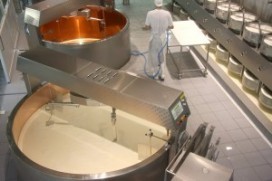 Although PAA does still have some safety considerations, as with all disinfectants, it is widely accepted that storage, generation and stability is superior to using chlorine.
Although PAA does still have some safety considerations, as with all disinfectants, it is widely accepted that storage, generation and stability is superior to using chlorine.
What are the typical applications PAA is used for?
PAA has been primarily used as a cleanser and disinfectant in the food industry since the 1950s, particularly for fruit and vegetable washing due to its highly effective anti-microbial properties. All disinfectants applied directly to food must not leave harmful residual by-products, which is why PAA is so widely used in this industry around the world. Other industries in which the water cleanliness is of paramount importance have also turned to PAA for disinfection including; agricultural, dairy processing, wineries, breweries and even cooling towers.
Pi’s work with H&M Disinfection – Food and Beverage Disinfection
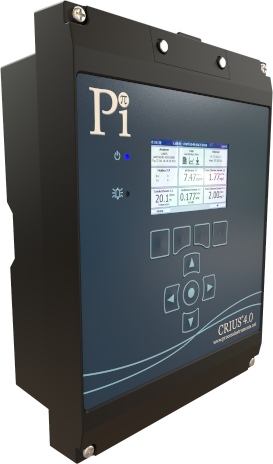 H&M Disinfection have designed, manufactured and installed cleaning and disinfection systems for the Food, Dairy and Beverage industries since the late 1980’s, providing their customers with bespoke cleaning solutions specific to their clients needs. More recently, Pi and H&M Disinfection combined their experience and expertise in water quality monitoring instrumentation and disinfection process engineering respectively to supply a UK food processing plant with an optimum water treatment solution, capable of handling their peak process water demand to ensure the sites final water meets the industry’s strict regulations. Pi’s peracetic acid analyser made up a small but integral part of the water treatment system provided by H&M Disinfection and continues to ensure the customer has optimum water quality.
H&M Disinfection have designed, manufactured and installed cleaning and disinfection systems for the Food, Dairy and Beverage industries since the late 1980’s, providing their customers with bespoke cleaning solutions specific to their clients needs. More recently, Pi and H&M Disinfection combined their experience and expertise in water quality monitoring instrumentation and disinfection process engineering respectively to supply a UK food processing plant with an optimum water treatment solution, capable of handling their peak process water demand to ensure the sites final water meets the industry’s strict regulations. Pi’s peracetic acid analyser made up a small but integral part of the water treatment system provided by H&M Disinfection and continues to ensure the customer has optimum water quality.
Fundamentally, an effective PAA chemical dosing controller should allow the user to find the perfect balance between saving PAA and dosing enough for optimum disinfection and this relies on the quality of the instrumentation. Pi’s PeraSense is the complete PAA dosing controller which uses a state of the art two electrode amperometric sensor to provide the highest levels of accuracy for process PAA monitoring.
The controller provides the flexibility to ensure you have all the functionality you need and nothing which you don’t. The CRONOS® and CRIUS®4.0 controllers have up to two and four sensor inputs respectively, with the option of up to 16 sensor inputs with expansions on the CRIUS®4.0 meaning you can monitor multiple parameters from a single controller.
The PeraSense has the option to come with full PID and output controls, which are completely user configurable to provide the site with the ability to make the instrumentation suit their needs. Pi’s controllers can also offer the option for remote access, which provides site or servicing contractors the ability to remotely monitor the live levels of PAA, trend historic data, view system alarms, remotely configure settings and much more.
Sensor Fouling
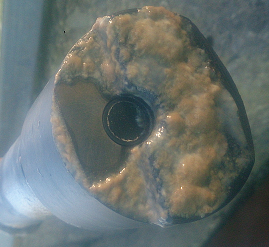 Whatever the process being monitored, there is often something in the sample water capable of fouling a sensor, and therefore causing erroneous results. The obvious solution to this problem is to clean the sensor, but how frequent should inspection and cleaning programs be for each piece of instrumentation? Too frequent and the inspection and cleaning regimen is time consuming and unnecessarily costly. Not often enough and the instrumentation will give false results and possibly fail prematurely.
Whatever the process being monitored, there is often something in the sample water capable of fouling a sensor, and therefore causing erroneous results. The obvious solution to this problem is to clean the sensor, but how frequent should inspection and cleaning programs be for each piece of instrumentation? Too frequent and the inspection and cleaning regimen is time consuming and unnecessarily costly. Not often enough and the instrumentation will give false results and possibly fail prematurely.
What is the solution?
Process Instruments’ AutoClean and AutoFlush Systems
Simple, reliable and easy to maintain, Process Instruments’ AutoClean/AutoFlush systems are an alternative to mechanical cleaning mechanisms which can clog and break. By frequently spraying the sensor/probe with clean water or air, the sensor remains clean and free from fouling for extended periods of time. The sensor cleaning cycle is activated by Pi’s controller for a user selectable length of time and frequency so that no matter how dirty the application, the probe remains clean. With no moving parts in the sensor body or in the cleaning attachment there is nothing to replace or check other than a simple valve positioned in an easy to reach location.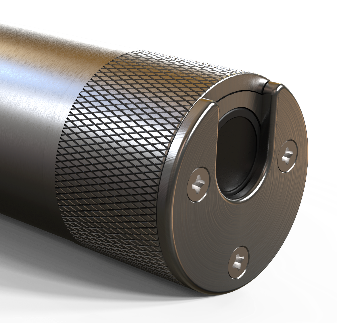 Pi’s AutoClean and AutoFlush systems can give trouble free and fouling free functioning of sensors for weeks, if not months, at a time.
Pi’s AutoClean and AutoFlush systems can give trouble free and fouling free functioning of sensors for weeks, if not months, at a time.
A solution for each application
AutoClean
This option can be added to our pH, ORP, Turbidity, Suspended Solids and Dissolved Oxygen (DO) sensors. Consisting of an end cap to direct the flow of clean water (or air for a DO sensor) across the face of the sensor blasting any dirt away. The cleaning is controlled by a single valve positioned in an easily accessible location.AutoVerify
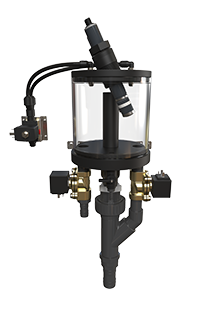 If using air to clean a DO sensor the system can also automatically verify that the sensor is still responding correctly, removing any need to remove the sensor from the sample for months at a time.
If using air to clean a DO sensor the system can also automatically verify that the sensor is still responding correctly, removing any need to remove the sensor from the sample for months at a time.
AutoFlush
For sensors that require flow cell mounting like Chlorine, Ozone and Chlorine Dioxide, an Autoflush system has inbuilt valves which automatically start/stop the sample flow and control the flow of clean water past the probe. The user can set the flushing interval and duration to keep the flow cell and sensor clear from fouling. For particularly dirty or stubborn contaminants, warm water can be used as the flush water to aid cleaning. With the above options, whatever the application or parameter being measured, Process Instruments will be able to provide a monitoring system that will not only be accurate, precise and long lasting but that will also remain free from fouling and save the operator both time and money.| Document | Type | Size |
|---|---|---|
| PeraSense | Brochure | 655kB |
| PeraSense for Online Peracetic Acid Monitoring | Technical Note | 796kB |
| Using Open Flow Cells with Membraned Sensors | Technical Note | 762kB |
| Probe Fouling | Technical Note | 459kB |
"We at Scottish Water have been using the excellent Pi LabSense 3 and portable UV254 instruments in the field for optimizing our Water Treatment processes for some years now. We find them easy to use and invaluable for detecting and resolving issues in a timely, efficient and effective manner. Two great pieces of kit!”
Paul Weir
Scottish Water - UK
"I want to thank you and all at Process Instruments for all the assistance, information and handholding during the year. The help that was so freely given was very much appreciated. Can you please extend my appreciation to all at Pi and let me wish you all a happy, safe and wonderful Christmas and I look forward to working with you again in 2021."
Michael Bailey
Wexford Co. Co. - Ireland
"Excellent level of support and always so much more prompt than a lot of our suppliers."
Phill Tuxford
Detectronic - UK
"The plant can’t produce good quality water without the CoagSense."
Mick Murphy
Wexford Co. Co. - Ireland
"We've used the CRIUS® with chlorine, pH and conductivity sensors for several years and confirm quality, performance and reliability has been wholly satisfactory to date."
David Kerr
Karis Technical Services Ltd. - UK
"We in ECM ECO Monitoring can only recommend Process Instruments products and services to all other potential clients. They have very complex portfolio of products for water quality monitoring in various types of industries, friendly attitude, very quick delivery time and prompt reaction to all our needs and inquires. Our clients especially appreciate the particle counters and sizers allowing identification of drinking water treatment problems. The Streaming Current Monitors are a great tool for optimisation of expensive chemicals.”
Branislav
ECM ECO Monitoring - Slovakia
"Simply the best turbidity available."
John Clark
Chemtrac - Atlanta, GA
"In 2019, we purchased 29 particle counters which were installed in our water plants. So far, their performance has been perfect."
Li Yongjun
Jinan Hongquan Water Company - China
"We have installed hundreds of ozone analyzers from Pi over the years. They are just accurate, reliable and require low maintenance."
Jiao Tumei
Qingdao Guolin Environmental Technology Co., Ltd., - China
"Over the last few years we've purchased chlorine and turbidity analyzers from Chemtrac and with routine calibration the probes measure the chlorine and turbidity without any issue. We are very happy with this product and would highly recommend them."
Daniel "Buck" Owen
Ocoee Utility District - Ocoee TN
"We've been using these analyzers since 2008. They're easy to use and very stable. Calibration and maintenance is quick and simple."
Lloyd Gruginski
Chehalis WTP - Chehalis, WA
"The Pi products provide excellent value for money and represent the best municipal drinking water analyzers available."
John Clark
Chemtrac - Atlanta
“Servicing customers is much more than just solving problems or addressing complaints and Pi does that very competently with technical and quick efforts providing a good experience."
Clovis Tuchapski
Buckman - Latin America
"Pi's technical team has enabled us to be one step ahead of our competitors by adding value to our projects thanks to their fast and excellent support from the moment you first reach out.
Ibrahim Kaplin
Thermomed - Turkey
"Going from ORP control to amperometric chlorine sensor control has undoubtedly improved the pool water immensely!"
Chris Tedeschi
Link Automation - USA
"The Streaming Current Monitor from Pi is the best SCM I have ever used. The analyser responds quickly and has many powerful functions, which helps me save a lot of money."
Ye Yancong
Xiamen Xishan Water Plant - China
“Process Instruments has a broad range of high quality and user-friendly solutions for water-industry problems. The short lead times and great customer support make Pi a reliable partner.”
Péter Szabó
SC KATALIN NOHSE CHIMIST IMPORT SRL - Romania
"Process Instruments UK always have a high level of customer service. All our interactions with Pi have exceeded our expectations. It is always a pleasure working with you.”
Iñaki Seisdedos Rodríguez
Izasa Scientific - Spain
"The support from Pi and its partners is superb. They go above and beyond to ensure that, not only is their equipment perfect but that the process is working great too. Five Stars!"
Anthony Glitto
Equip Solutions - Illinois, USA
"Process Instruments UK always have a high level of customer service. All our interactions with Pi have exceeded our expectations. It is always a pleasure working with you.”
Rudi Tuffek
Allpronix - South Africa



